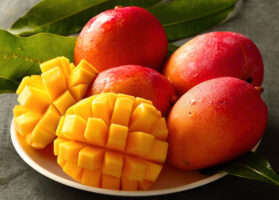Agronometrics in Charts: Peru Surpasses Chile As The Leading Exporter of Table Grapes in South America Despite Setbacks
In this installment of the ‘Agronometrics In Charts’ series, Sarah Ilyas studies the state of the Peruvian grape industry. Each week the series looks at a different horticultural commodity, focusing on a specific origin or topic visualizing the market factors that are driving change.
The Peruvian grape season is winding down. Compared to last year, Peru is witnessing a 9 to 10 percent increase in production. The reduction from initial estimates is mainly caused by loss of fruit due to weather and political strikes. The intense rainfall brought by Cyclone Yaku could hinder the country’s goal of exporting US$10bn of agricultural products in 2023. Manuel López, a professor at the University of Piura, has estimated that the aggregate value of exports may reach US$9.5bn, representing a reduction of 5 percent, should the present circumstances persist. In addition to the deleterious effects on production, the precipitation is anticipated to increase the occurrence of phytosanitary and other complications. Climate experts have cautioned that if the wet and warm spell continues through April and May, they could trigger an El Niño phenomenon.
Incoming volumes culminated at roughly 31.5 K tonnes in week 4, a 16 percent increase compared to the peak volumes recorded in the 2021/2022 season.

Source: USDA Market News via Agronometrics.
(Agronometrics users can view this chart with live updates here)
While the main table grape harvest (September to January) is over, there are concerns that fungal outbreaks could impact the second harvest (May to July). Moreover, the agribusiness industry of Peru has been adversely affected by political strikes. “It created a domino effect in every sector of the industry,” says Dirk Winkelmann of Vanguard International. “From materials, to labor, applications, logistics, loading schedules, and transit times to markets. When the strikes in Peru hit, the northern Piura region had essentially completed harvest and Ica ended up taking the brunt of the impacts,” he adds.
In the 2022-2023 season, Peru surpassed Chile as South America’s leading exporter of table grapes for the first time, marking a significant milestone for the sector. “Peru has been actively planting new varieties and that’s the country’s main differentiator,” says Winkelmann. “Newer plantings in Peru are coming into full maturity while Chilean volume of traditional varieties is dropping, and Chile has been slower for various reasons in the plantings of new varieties. In Chile, all new varieties must enroll in a mandatory quarantine program. This makes new IP variety growth a longer hurdle compared to the growing region of Peru.”

Source: USDA Market News via Agronometrics.
(Agronometrics users can view this chart with live updates here)
Approximately 68 percent of total grape production in Peru comprises new varieties. The country has always been able to plant new cultivars and attain productive maturity more rapidly than most other nations and has also been more proactive about planting new varieties. “Overall, Peru is taking the lead in production of new varieties,” Winkelmann says. He is seeing a strong movement towards green grapes, followed by red and then black.
Capricious weather, particularly heavy rainfall during the table grape harvests in the past few seasons has posed many challenges for producers. “Climate variability is a reality that cannot be ignored and since the business is increasingly competitive, it is essential for growers to be able to have consistency in production year after year and maintain the quality of the fruit over time,” says Sebastian Escalona, Product Manager of SerroPlast Latam in Peru and Chile.
In our ‘In Charts’ series, we work to tell some of the stories that are moving the industry. Feel free to take a look at the other articles by clicking here.
All pricing for domestic US produce represents the spot market at Shipping Point (i.e. packing house/climate controlled warehouse, etc.). For imported fruit, the pricing data represents the spot market at Port of Entry.
You can keep track of the markets daily through Agronometrics, a data visualization tool built to help the industry make sense of the huge amounts of data that professionals need to access to make informed decisions. If you found the information and the charts from this article useful, feel free to visit us at www.agronometrics.com where you can easily access these same graphs, or explore the other 21 commodities we currently track.
Written by: Sarah Ilyas






